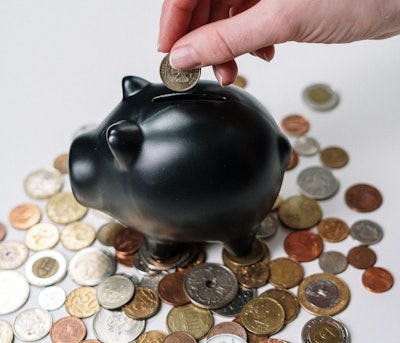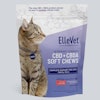
KibbleCon 2022, put together by Kansas State University’s Pet Food Program and K-State Innovation Partners, kicked off the evening of October 19 with a welcome reception at the Bluemont Hotel in Manhattan, Kansas, USA, highlighting the conference’s sponsors (full disclosure: Petfood Industry/Petfood Forum is the exclusive media partner for the 2022 event). Attendees got down to business, however, on October 20, with a full day of presentations and discussion from a variety of industry experts, including K-State faculty, ingredient suppliers, pet food manufacturers, data analysts and equipment suppliers.
The current economics of pet food
Dr. Aleksan Shanoyan, associate professor with the Department of Agricultural Economics at K-State, discussed “Key insights from the latest research on the economics and management of pet food” alongside recent consumer research that shows pet owners are becoming increasingly functional-focused when it comes to their pets’ food. In an analysis of consumers’ pet food product online reviews, “health” and “ingredient” were by far the top two attributes mentioned.
In a mature market, said Shanoyan, it can be difficult to stand out as a pet food company with such dominant asks from pet owners, but it can be done with an eye towards differentiation based on specialization, be it physical (formulation, processing, packaging), perceptual (marketing and advertising) or supply chain (organic, local, human grade).
During the lunch keynote, “Measuring the pet industry in 2022 — what’s trending and what’s next?” Chris Storves, associate client director at NielsenIQ, dove more deeply into current economic challenges for the pet food industry, particularly inflation.
“In the U.S. overall, inflation in pet care continues to rise visibly,” said Storves during his presentation, with the pet care price index sitting at 130.73 as of September 2022, up 25.03 points from September 2021. Within that, prices continue to rise across key categories, including cat food (price index of 130.6, up 25.12 points from the previous year); dog food (133.8, up 28.11 points); and especially bird food, which was indexed at 133.8 in September 2022, a 30.1-point increase from 2021.
It is important to note, then, that inflation is a leading contributor to dollar growth across the pet care space, said Storves — in fact, 91.4% of dollar growth in pet food is currently due to inflation (only slightly lower than the overall 94.7% growth due to inflation in pet care overall).
The U.S. continues to be, by far, the largest market in pet food in terms of revenue, according to Guy Allen, senior economist for K-State’s IGP Institute and speaker on “Price volatility, changing supply chains and other economic drivers of food, ingredients and agricultural commodities.” In 2021, according to his presentation, U.S. pet food market revenue reached approximately US$43.68 billion, while the United Kingdom came in second at US$6.6 billion. In terms of U.S. export markets for dog and cat food, Canada continues to be the country’s top partner, followed by Mexico, Japan, South Korea, China and Australia (as of 2020 data).
There are plenty of challenges to deal with beyond inflation that affect the global market, according to Allen. Among the top concerns for the industry are geo-political issues such as the Russia-Ukraine War, China-U.S. relations, increasing tensions between Iran and Israel and in the South China Sea, current crude oil prices (at a seven-year high), and increasing government policies all over the world to restrict trade and protect domestic markets. Fundamental supply and demand issues are also at play due to factors such as weather, record demand against tightening supplies, increasing fossil fuel prices, and animal health concerns.
How are consumers handling economic challenges?
In response to this, pet owners continue to say (for now) that their brand purchasing isn’t going to change. Rather than shift down in the market (from superpremium to premium, or premium to economy), customers are instead shifting their purchasing patterns to things like smaller package sizes to obtain temporary price relief at the register, according to Storves. In fact, while larger bag sizes continue to drive dry dog food sales, increased growth is coming from smaller bag sizes, he said. Conversely, in the dry cat food space smaller bags are driving sales, but growth is coming from larger bag sizes, perhaps because cat owners feel they can “price up” a bit in order to buy in bulk to save some money in the longer run.
Online purchasing continues to grow, with growth online eclipsing that of in-store for the majority of pet care categories, according to Storves. That’s not to say that in-store purchasing isn’t happening, though; in fact, omni-channel shoppers (those who purchase both in-store and online) are significantly driving sales value in the pet space right now, said Storves, making up 28% of pet buyers and 53% of pet dollars.
There are also some key pet food segments seeing accelerated growth in 2022 that show pet owners’ continued willingness to go the extra mile for their pets. Meal enhancers (not including treats) are up 35.5% compared to 2021, while 100% freeze-dried products are up 33.2%. More modestly but still significantly, frozen products are up 17.0% from 2021 and those in the “natural” segment are up 12.2% versus a year ago.
Suffice to say, though the global economy is far from stable and everyone is looking for ways to conserve their dollars, pet food remains an area of growth and opportunity in a difficult time.
For more on KibbleCon 2022, including the full list of speakers and itinerary, go to www.kibblecon.com.


















